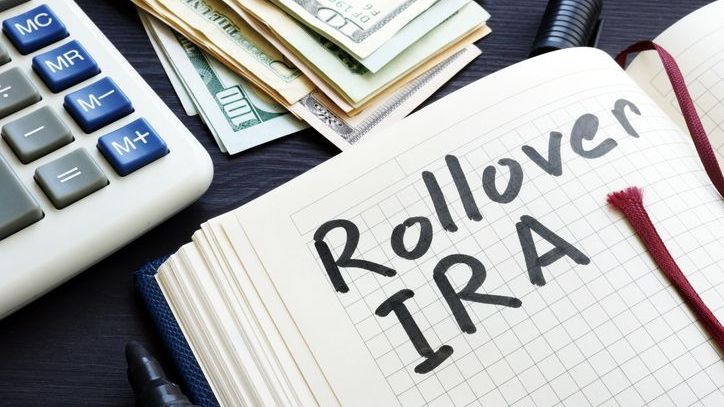Managing retirement savings effectively often involves rollovers, which allow investors to move funds from one retirement account to another without incurring taxes or penalties. In a direct rollover, the funds are transferred directly between accounts, while an indirect rollover requires the account holder to receive the funds before depositing them into a new retirement account. Understanding the differences between these two methods can help investors steer clear of potential issues and keep their retirement savings growing on a tax-deferred basis.
Have questions about rollovers or another aspect of managing your retirement savings? Consider speaking to a financial advisor.
What Is a Rollover?
A rollover is the process of transferring funds from one retirement account to another, such as moving funds from a 401(k) to an IRA. Rollovers help maintain the tax-deferred status of retirement savings, ensuring that investors do not incur immediate tax liabilities.
A direct rollover occurs when the funds are transferred directly from one retirement account to another without the account holder ever touching the money. This process is straightforward and minimizes the risk of taxes and penalties. The account holder simply instructs the financial institution holding the funds to transfer them to the new account.
An indirect rollover, on the other hand, involves the account holder receiving the funds personally before depositing them into another retirement account. The account holder has 60 days to complete the rollover to avoid taxes and penalties. However, the initial distribution is subject to a mandatory 20% withholding tax, which the account holder must make up from other sources to roll over the full amount.
If the rollover is not completed within the 60-day window, the distribution becomes taxable. If the account holder is under 59 ½, an additional 10% early withdrawal penalty is levied on top of income taxes, unless specific exemptions apply.
Here’s a look at the differences between these two types of transactions:
Differences of Direct vs. Indirect Rollovers
| Direct Rollovers | Indirect Rollovers | |
|---|---|---|
| Taxes | Do not involve any tax withholding, as the funds are transferred directly between accounts | Require a 20% withholding tax on the distributed amount, which the account holder must replace to avoid taxes and penalties |
| Risk of Penalties | Eliminate the risk of penalties because the account holder never touches the funds | Carry the risk of taxes and penalties if the rollover is not completed within 60 days |
| Simplicity | Simpler and more straightforward, involving less paperwork and fewer steps | Require the account holder to manage the funds personally, increasing the complexity and risk of errors |
Examples of Direct and Indirect Rollovers

The following examples highlight the simplicity of direct rollovers and the potential pitfalls of indirect rollovers.
Sarah, a 45-year-old marketing manager, is leaving her current job for a new opportunity. She has accumulated $100,000 in her 401(k) with her old employer and wants to transfer these funds into a traditional IRA to maintain tax-deferred growth. Sarah opts for a direct rollover, where she instructs her 401(k) provider to move the funds directly to her chosen IRA account.
The provider transfers the entire $100,000 directly into her new IRA without Sarah ever receiving the money. This seamless process allows Sarah to avoid any taxes or penalties, ensuring her retirement savings continue growing uninterrupted.
John, a 38-year-old software developer, also decides to move his 401(k) funds after switching jobs. He has $80,000 in his 401(k) and chooses an indirect rollover. His 401(k) provider sends him a check for $64,000, withholding 20% ($16,000) for federal taxes. John has 60 days to deposit the full $80,000 into his new IRA to avoid taxes and penalties, meaning he must cover the $16,000 gap from his own funds. If John fails to deposit the full amount within the 60-day window, the withheld $16,000 becomes taxable income, and if he’s under 59 ½, he could face an additional 10% early withdrawal penalty. This process highlights the complexity and risks of indirect rollovers compared to direct rollovers.
Benefits of Direct and Indirect Rollovers
Both direct and indirect rollovers offer specific benefits that can be advantageous depending on the investor’s situation.
- Direct rollovers: The primary benefit of direct rollovers is the elimination of tax withholding and penalties. This method ensures a smooth, swift transfer of funds with minimal risk and less administrative work.
- Indirect rollovers: Indirect rollovers provide flexibility for account holders who may need short-term access to their funds. By receiving the distribution personally, investors can use the funds temporarily, provided they can replace them within the 60-day window to avoid taxes and penalties.
Other Considerations of Direct vs. Indirect Rollovers
There are some other aspects of rollovers, as well as transfers, that are important to be aware of, especially when it comes to avoiding taxes and penalties.
While rollovers involve moving funds between different types of retirement accounts, transfers typically occur between similar accounts and do not involve any distribution to the account holder.
For indirect rollovers, consider both mandatory 20% withholding tax and the once-per-year rule. The once-per-year rule limits the number of indirect rollovers an account holder can perform within a 12-month period, reducing the potential for tax avoidance.
Direct rollovers and transfers are generally non-reportable, meaning they do not trigger a taxable event. Indirect rollovers are reportable events, requiring the account holder to report the distribution and subsequent rollover on their tax return.
Bottom Line
Understanding the differences between direct and indirect rollovers is vital for investors looking to manage their retirement savings efficiently. Direct rollovers offer a straightforward, risk-free way to transfer funds between retirement accounts, while indirect rollovers provide short-term access to funds but come with added complexities and risks.
By knowing the rules and requirements associated with each type of rollover, investors can make informed decisions that protect their retirement savings.
Retirement Planning Tips
- Figuring out how much income you’ll need and how much you can realistically expect to have in retirement is a critical step in the planning process. SmartAsset’s retirement calculator can help you estimate how much annual income your assets and Social Security will potentially generate in retirement, as well as how much you’ll need to cover your projected expenses.
- A financial advisor can help you plan for retirement and build an income plan based on your means and needs. Finding a financial advisor doesn’t have to be hard. SmartAsset’s free tool matches you with up to three vetted financial advisors who serve your area, and you can have a free introductory call with your advisor matches to decide which one you feel is right for you. If you’re ready to find an advisor who can help you achieve your financial goals, get started now.
Photo credit: ©iStock.com/designer491, ©iStock.com/kate_sept2004, ©iStock.com/KaraGrubis
Read the full article here




